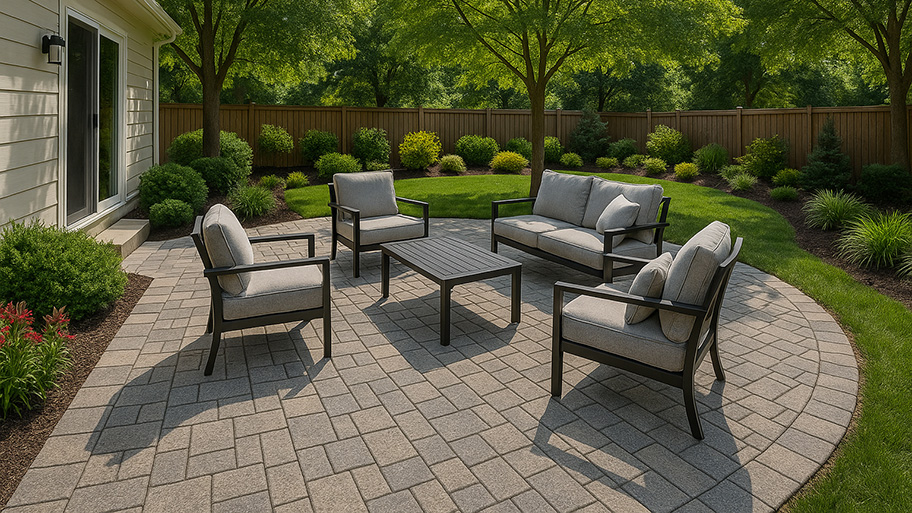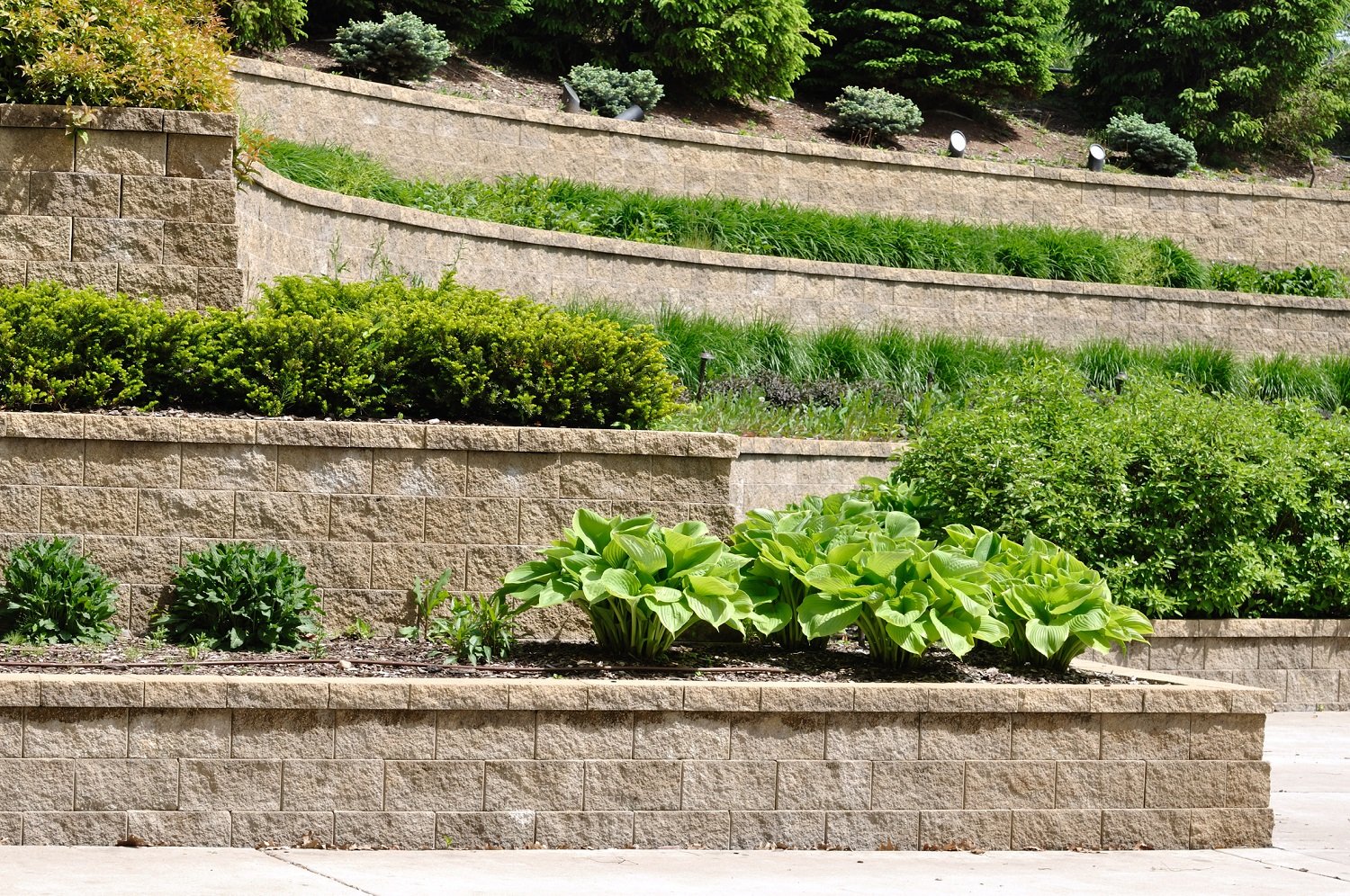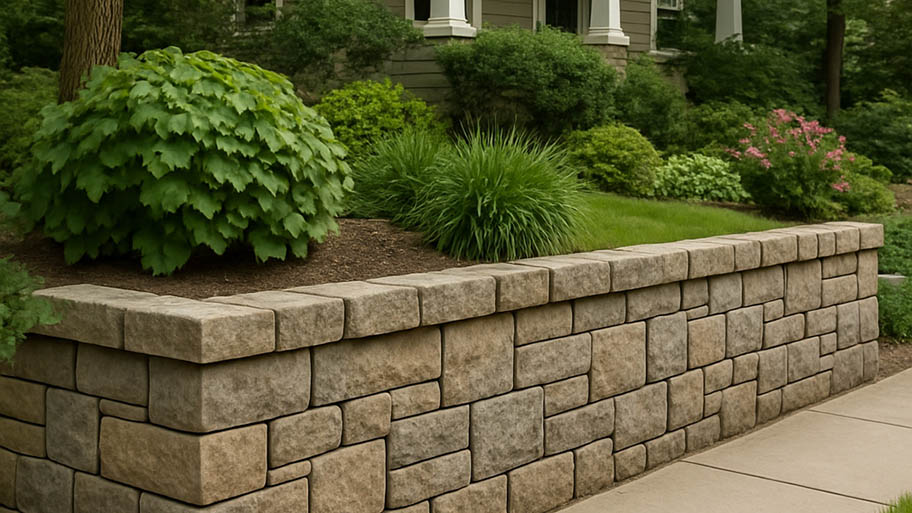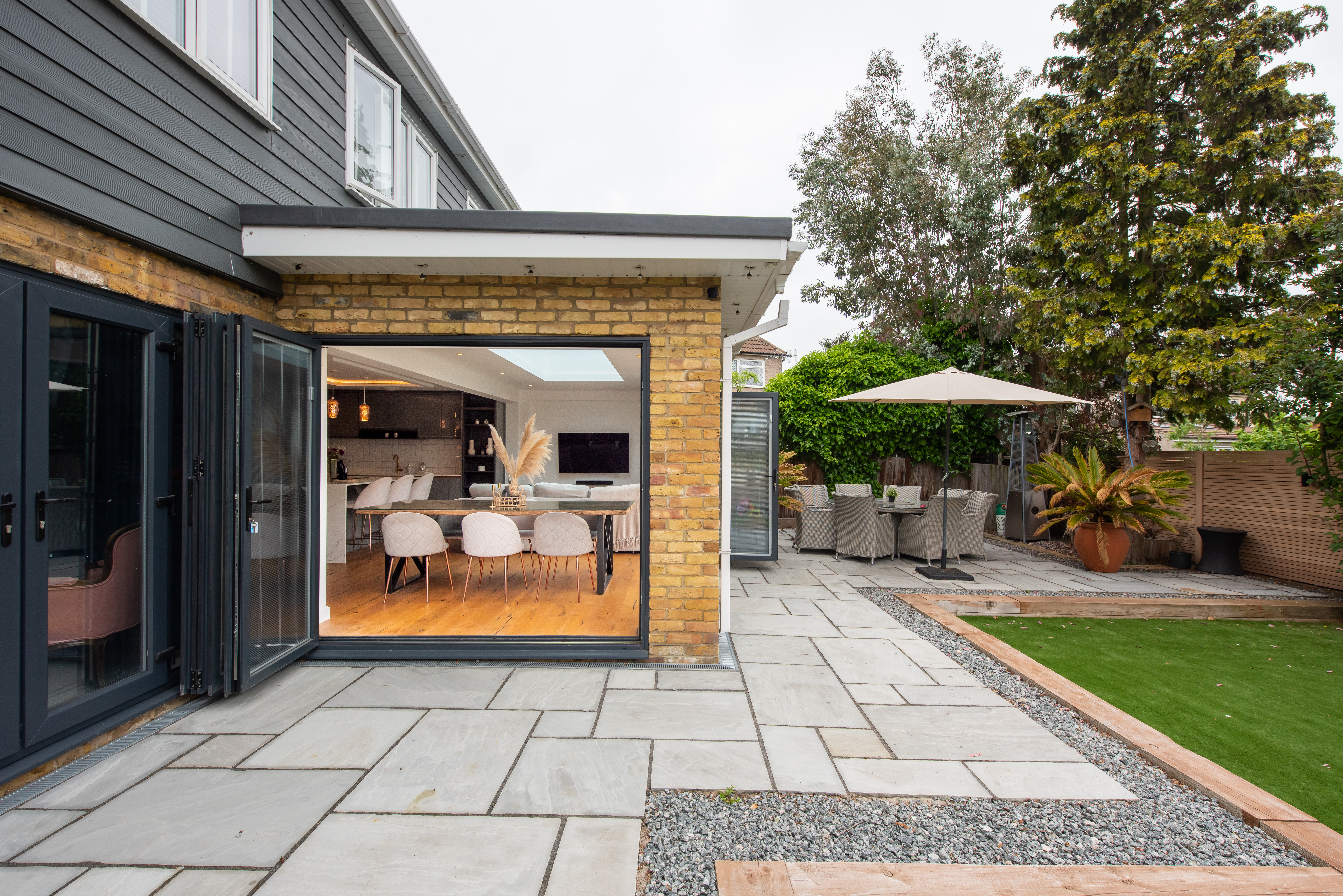
Thinking about installing concrete or brick pavers for a walkway or patio? Learn the cost of interlocking pavers in this informational guide.
Nature's stylish bookends for unruly landscapes


A retaining wall is a structural feature that supports your landscaping and prevents erosion.
Retaining walls can be made from different materials including concrete, bricks, stone, and even wood.
There are different types of retaining walls, and which type is best depends on your desired design.
Simply put, a retaining wall is a structural feature that allows you to support your landscaping and help prevent erosion. In hilly and mountainous terrain, retaining walls can be used to provide flat grades or even terraced spaces for gardening or recreation—or simply to make your home’s outdoor living space more family-friendly.
If you live in a moist or flood-prone environment, a retaining wall can be essential for preventing your soil from washing away. That means that a retaining wall isn’t always about aesthetics. It is also often a matter of safety.
You don’t have to build a fortress to get a retaining wall that works. Even a low wall can serve its purpose well.
The materials you choose for your retaining wall can also vary widely, depending on your personal preference, the purpose of the wall, and the soil and weather conditions. Most walls are made from wood, concrete, brick, or stone.
If you choose to install a retaining wall, though, you should budget accordingly. The cost of a retaining wall can range from $3,200 to $9,200, depending on the size, materials, and location.
One of the primary benefits of a retaining wall is to make your outdoor space safer and more functional.
It’s pretty tough to grow the garden of your dreams on a hillside so steep you feel like you need rock-climbing equipment to scale it. Even worse, if your landscape seems to wash away with every intense rainstorm, then a retaining wall can provide a wonderful sense of security.
There are other options, of course, if erosion is a concern. On average, it costs less to regrade a yard than to install a retaining wall. But the tradeoff is that the earth moved during regrading will likely continue to shift, meaning you may end up repeating the process all over again. Plus, unlike a retaining wall, you don’t have the structural reinforcement of earth and soil as you do with a stone, steel, brick, or concrete wall.
A retaining wall can positively impact drainage patterns in the area. When properly designed, the wall can divert water flow to prevent excess water from rapidly flowing downhill and causing erosion. When soil erosion is reduced, there is less sediment carried away by water, which in turn can help to maintain better drainage activity.
When a retaining wall is built with multiple levels, also called terraces, the wall can help create flat, usable spaces on a steep slope. Each terrace can act as a level surface that allows water to infiltrate into the soil, reducing surface runoff and enhancing drainage.
Retaining walls can be crafted with features like weep holes and French drains that provide a means for water to escape. These particular elements ensure hydrostatic pressure does not accumulate behind the wall, preserving its stability and ensuring efficient drainage.

You don’t have to be worried about your yard and home slip-sliding away to benefit from a retaining wall, though. Retaining walls can add tremendous visual appeal to your home’s exterior.
A series of low retaining walls in appealing designs and materials can add levels to your yard, making your landscape look more like an English manor home than a suburban home in the heart of America.
Best of all, you can use retaining walls to make mini-terraces expressly suited for all the purposes your outdoor living space serves. Whether it’s cookouts, toasting marshmallows around the fire pit, or relaxing in a lounge chair with a good book, hardscaping with strategically-placed retaining walls can provide ideal dedicated spaces for them all.
Here are a few fun retaining wall ideas to inspire your yard’s transformation.
There are five basic types of retaining walls, and each has its own benefits and drawbacks.
Cantilever retaining walls create an “L” shape using steel bars and concrete slabs. The soil holds part of the base (called the “heel") down, while a smaller part of the base (the “toe”) sticks out from the earth. Because of their strength and durability, cantilever walls are commonly used in commercial landscaping.
Instead of using leverage like the cantilever, gravity retaining walls work by using … gravity. Though this is the thickest kind of retaining wall, it’s easy to install and can be made from a variety of materials. Bonus: this type of wall typically doesn’t need any additional reinforcement.
This type of retaining wall is supported by anchors that go deep into the ground. This method is a go-to if you have a thinner wall or if it needs to support a substantial amount of earth. Anchored retaining walls are typically budget-friendly and can withstand pressure for a long time without issue.
If you’re short on space, a piled retaining wall is installed deep into the ground (up to 1/3 of the wall will be underground). This is the thinnest retaining wall and, like anchored walls, can withstand a large amount of pressure. These are typically made from steel or concrete.
Gabion retaining walls are created by layering wire mesh baskets filled with rocks or other similar durable materials. These retaining structures control erosion, maintain slopes, and help create retaining structures in different terrains. Gabions, when linked together, not only support the flow of water, but also facilitate it, effectively inhibiting soil erosion and managing water drainage.
Just as there are different types of retaining walls, there are also different materials you can use to build them. Here are a few of the popular choices.
Poured concrete makes one of the strongest retaining walls, and it can be poured into a variety of modern designs. However, it can be prone to cracking and bulging. And, because installation requires very specific, specialized skills, you’ll need to hire a local concrete pro to build a poured concrete retaining wall for you.
Concrete retaining walls can last between 50 to 100 years. You can expect a concrete wall to cost between $30 to $40 per linear foot.
While you’ll need a pro for poured concrete walls, you can probably tackle building a retaining wall using concrete blocks on your own. Blocks also make it easy to design curved walls, and you can choose from a variety of different colors. But because of the weight, this material is only recommended for walls under 4 feet tall. Concrete blocks do have lasting power, and can last between 50 to 100 years.
Concrete blocks are often referred to as cinder blocks. On average, a cinder block wall costs between $1 to $3 per block.
Like concrete, masonry is a great long-lasting option for retaining walls. It’s strong, durable, and gives your yard a gorgeous, traditional look. That said, this isn’t a DIY-friendly option—you’ll need to hire a professional to do the work. Brick retaining walls can last at least 100 years, while stone features similar longevity to concrete lasting between 40 to 100 years.
When it comes to price, a brick wall costs between $10 to $45 per square foot while the cost of a stone wall varies based on the type of material used. Natural stone is more expensive ranging from $25 to $80 per square foot and stone veneer costs between $10 to $25 per square foot.
For a rustic touch, wood retaining walls are the perfect choice. The materials are affordable and accessible, and it’s a simple project for handy homeowners to build. That said, wood is not the most durable material—it can rot and warp. But, if properly installed with thorough waterproofing, this type of retaining wall can last up to 20 years and costs between $15 to $30 per square foot.
Steel retaining walls are favored for their strength, durability, and versatility, and are often designed to withstand lateral soil pressure. The material offers relatively slim profiles, making them suitable for environments where space is limited. Proper corrosion protection is crucial to ensure the longevity of steel retaining walls, as exposure to moisture and other environmental factors can lead to rust and deterioration over time.
Typically, steel retaining walls can last between 25 to 100 years. The cost for a steel retaining wall ranges between $15 and $150 per square foot.
Everything needs maintenance, and that goes for retaining walls, too. If you encounter any of the following problems, here’s what to do.
Drainage is vital for a successful retaining wall. Without drainage, the soil soaks up all the moisture and becomes heavier, putting more strain on the wall. Always add drainage materials such as crushed stone or gravel. Sometimes, you’ll need to add a drainage pipe.
Don’t expect a towering wall of concrete blocks to hold up without extra support. Before building, consult with a pro (even if you’re planning to do the heavy-lifting yourself) on the best type of wall for your desired material and yard. Depending on your needs, you might be able to get away with a gravity retaining wall, or you might need to go all-in on an anchored wall.
Footing is an underground structure that supports the retaining wall. If you add a wall without making sure the footing is solid, there’s a strong possibility your foundation will shift and the wall will become damaged. The footing should be deep underground—underneath the wall—and be made of rocks or gravel.
While homeowners may be able to build a small retaining wall with concrete blocks on their own, this is otherwise not a DIY project, particularly if the wall is structurally integral to your yard or home. Building a retaining wall is back-breaking work with a high risk of injury that requires very specific masonry materials and tools, and if done incorrectly, it can lead to several problems down the road. Instead, find a highly reviewed retaining wall contractor near you to tackle the job.
Before hiring a retaining wall contractor, get quotes from at least three pros, comparing not just cost but also timeline (how soon can they start, and how long will it take?) and customer reviews. Always make sure they’re licensed and insured, and ask if they’ll obtain necessary permits on your behalf.
From average costs to expert advice, get all the answers you need to get your job done.

Thinking about installing concrete or brick pavers for a walkway or patio? Learn the cost of interlocking pavers in this informational guide.

Need to know how much decomposed granite costs? Learn about the factors that affect decomposed granite's price and how much you need for your project.

Kick erosion to the curb with an eye-catching retaining wall. Retaining wall costs vary based on the material, but this guide will help you budget.

Replacing a retaining wall or installing a new one after grading? Here are some retaining wall questions you should be prepared to answer when hiring a pro.

Pavers turning fuzzy and green? Use this simple guide to get rid of moss on pavers yourself over the weekend.

Learn how to hire a hardscape contractor for your project, including what to look for and red flags to watch out for to get the best results possible.